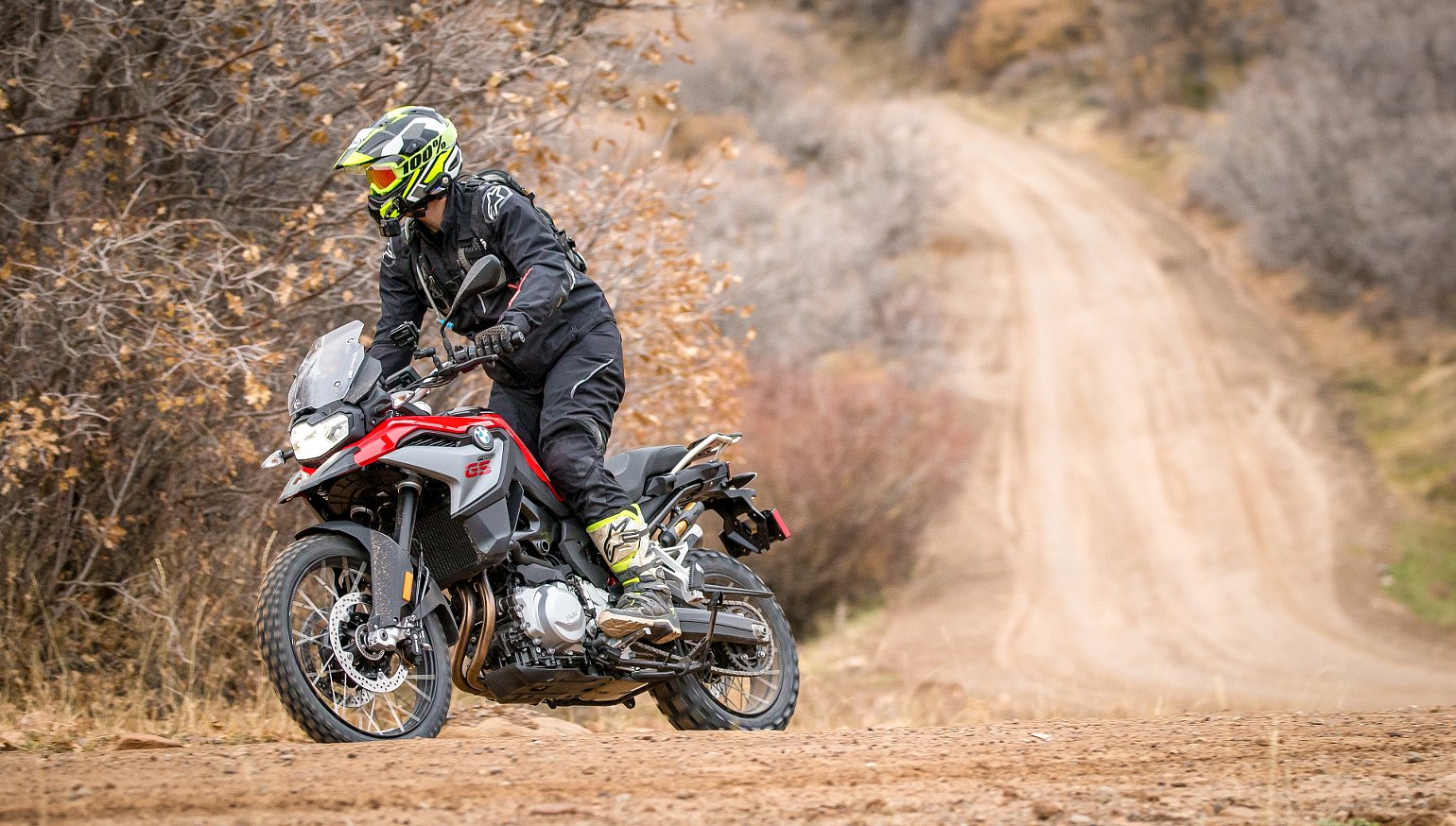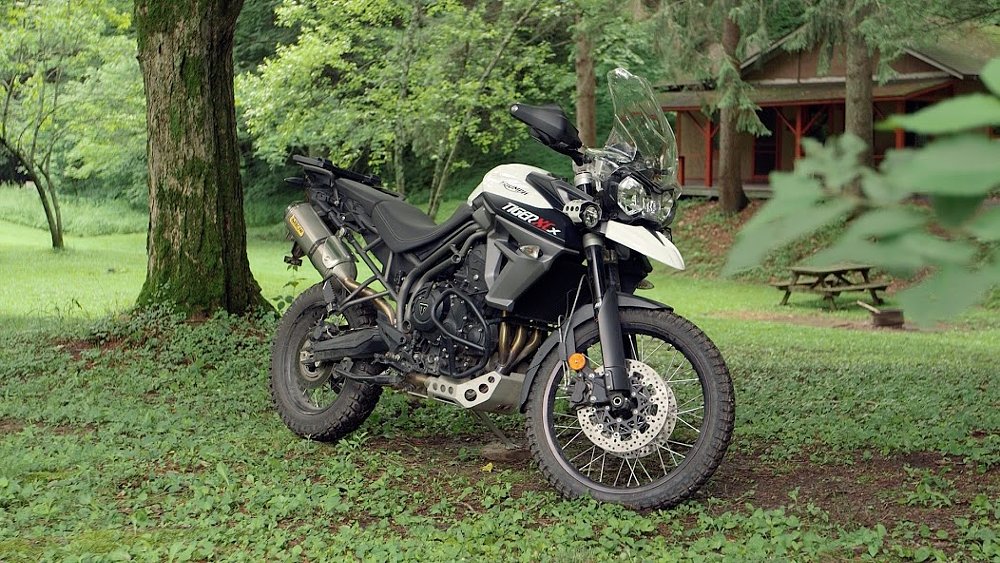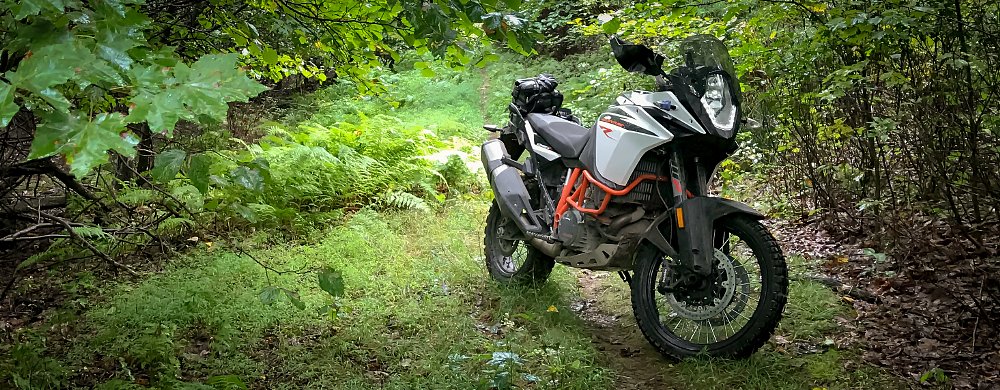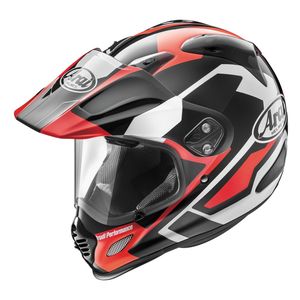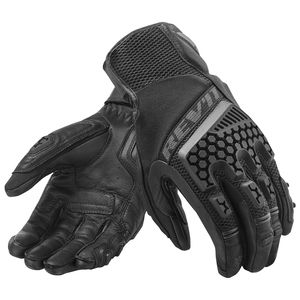The BMW F 800 GS was the first adventure bike I ever took off-road. It was an early 2010 model that we had sitting around our office that no one was using at the time. I stole the keys, installed some Mitas E-07 tires, and headed out for the weekend to teach myself how to pick up an ADV bike.
Fast forward a few years and while my skills off-road have progressed substantially, the F 800 GS has remained relatively unchanged. When it was introduced, the F 800 arguably ushered in the middleweight adventure bike segment. Unlike the R 1200 GS, the F 800 GS utilized a 21-inch front wheel, chain drive, conventional fork design (as opposed to a telelever front end), and a compact parallel twin engine. It quickly became one of the best options for folks looking for off-road adventure from a large bike.
Triumph followed BMW’s lead, releasing the Tiger 800 XC a year later, and for a while, those were the two main options in the middleweight segment of off-road-biased adventure machines. There were bikes like the Suzuki V-Strom 650, the BMW F 700 GS, and the Triumph Tiger “Roadie,” but their focus was more on long-haul street touring.
As the years went, by the middleweight segment continued to evolve. Triumph revamped their Tiger line in 2015, Honda reintroduced the Africa Twin in 2016, and KTM tricked us into thinking a 1090 Adventure R was a mid-sized adventure bike in 2017. But with all of this change, the BMW F 800 GS chugged along, getting minor additions and updates, but for the most part staying very much the same. Until now.
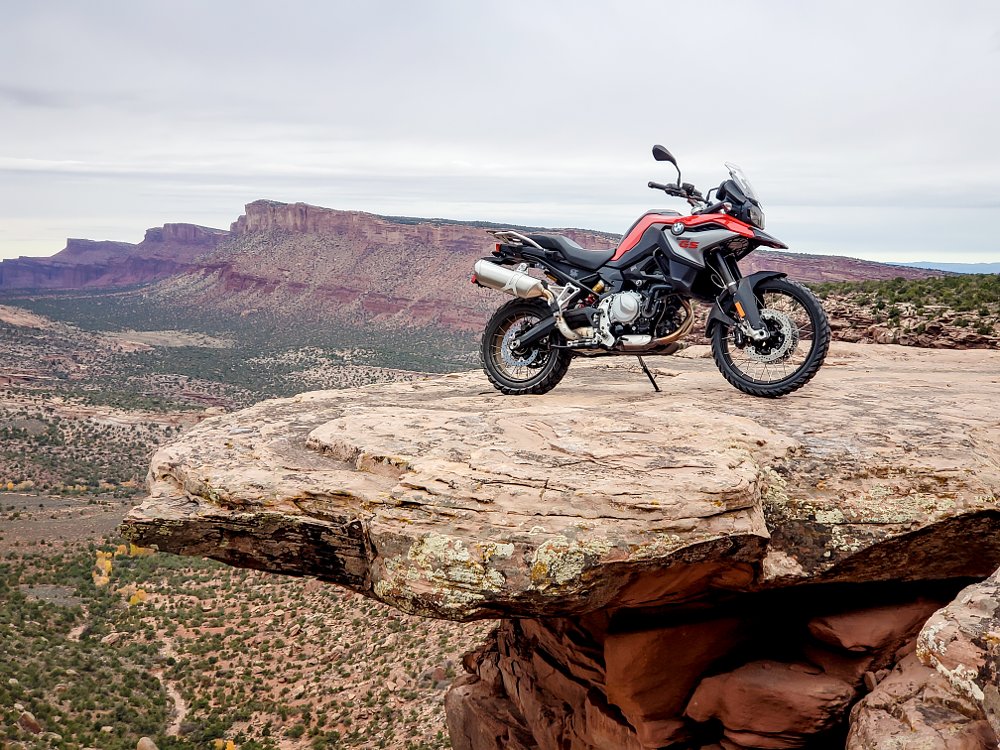
The F 850 GS
It’s been almost a full year since I penned my first thoughts on BMW’s announcement of their revamped p-twin-powered GSes. The initial news came and went, and I continued to wait for more information, but nothing arrived.
As it turns out, BMW was experiencing delays with the Chinese engine manufacturer, Loncin, which was tasked with producing the new engines. These delays pushed back the release of the new bikes by nearly a year.
The all-new 853 cc parallel twin is used in both the F 850 GS as well as the F 750 GS (there will be an independent review on the 750 coming shortly). The 850 gets dedicated intake and exhaust cams and a model-specific ECU to increase power delivery and throttle response compared to its smaller sibling.
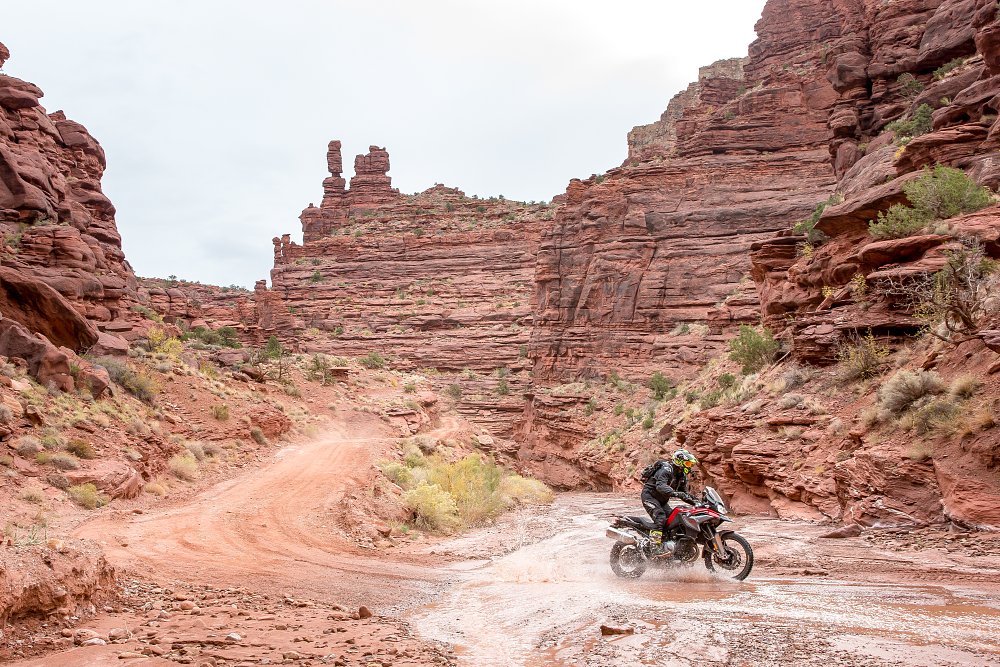
BMW claims that in the F 850 GS the engine makes 90 horsepower at 8,000 rpm and 63 foot-pounds of torque at 6,250 rpm. That’s up over the previous F 800 GS, which claimed 85 horsepower at 7,500 rpm and 61 foot-pounds of torque at 5,750 rpm. None of which accurately depicts the real story behind this new motor.
The marginal power increase is nothing compared to how different this engine feels. BMW abandoned the 360-degree firing order with 0-degree crank pin offset in favor of a 270-degree firing order with 90-degree crank pin offset. In addition, it also receives a dual counterbalancer setup. The result is a buttery smooth engine that significantly cuts down on vibration.
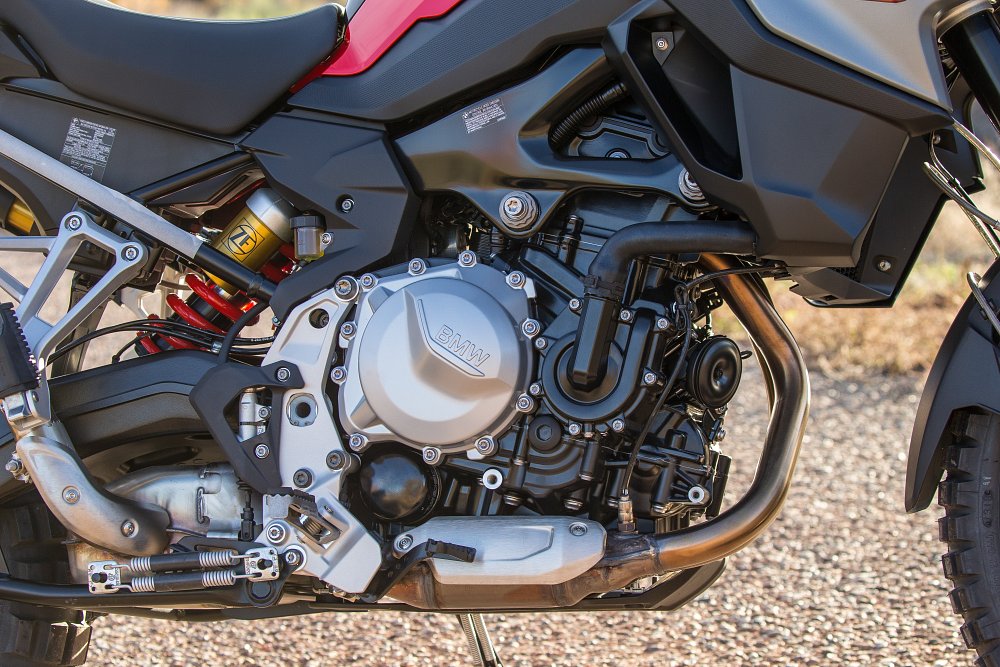
Gone is the old trellis frame, replaced by a steel bridge frame that allows for the engine, which is a stressed member of the bike, to sit higher in the chassis. This, coupled with a new dry sump design, allows for an increase in ground clearance to 9.8 inches over the previous version’s 8.5 inches. This increase comes in spite of the front fork losing over an inch of suspension travel.
I had a lot of questions regarding the changes to the suspension, mainly the revised, upside-down, 43 mm fork. Unfortunately, the BMW officials were not clear on the specific changes. According to the spec sheet, the new fork features 8 inches of travel whereas the fork on the old bike had 9.1 inches. While I was disappointed that the new unit didn’t receive any external adjustability, I was happy to find that it feels much more appropriately sprung and damped than the previous version.
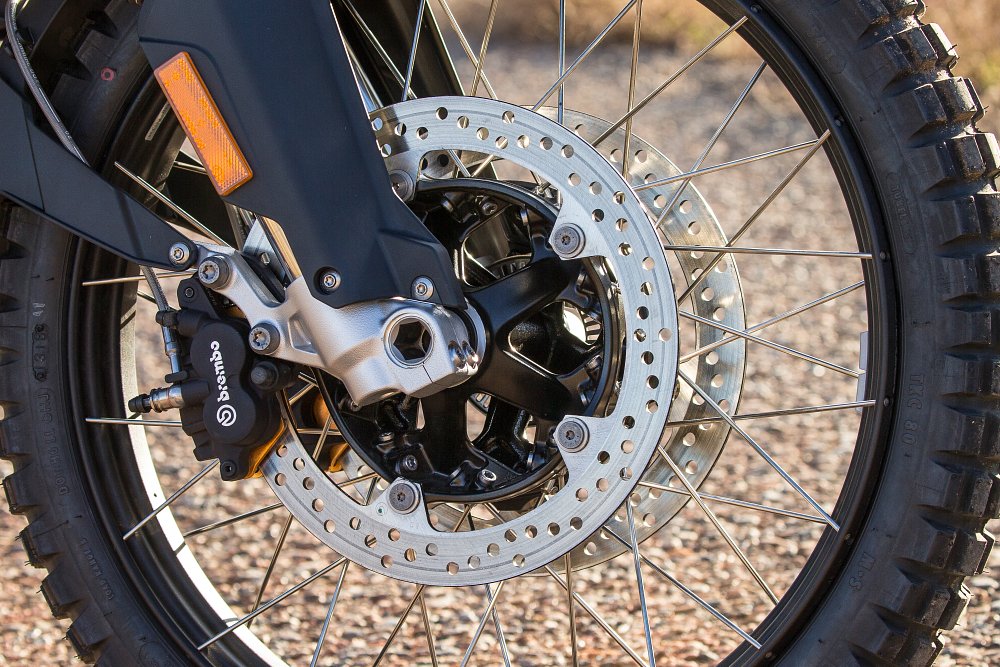
When I clamped down on the brake lever, the dual Brembo, two-piston calipers slowed the bike down quickly with minimal fork dive. The front end on the 2010 F 800 GS I last rode was a pogo stick by comparison.
Whereas the front fork lost travel, the rear shock actually increased by a sliver, 8.6 inches instead of the 8.5 inches on the old F 800 GS. The base rear unit is BMW’s progressive-damping (WAD) spring strut, which gets stiffer further into the stroke. It is also hydraulically adjustable for preload and rebound damping.
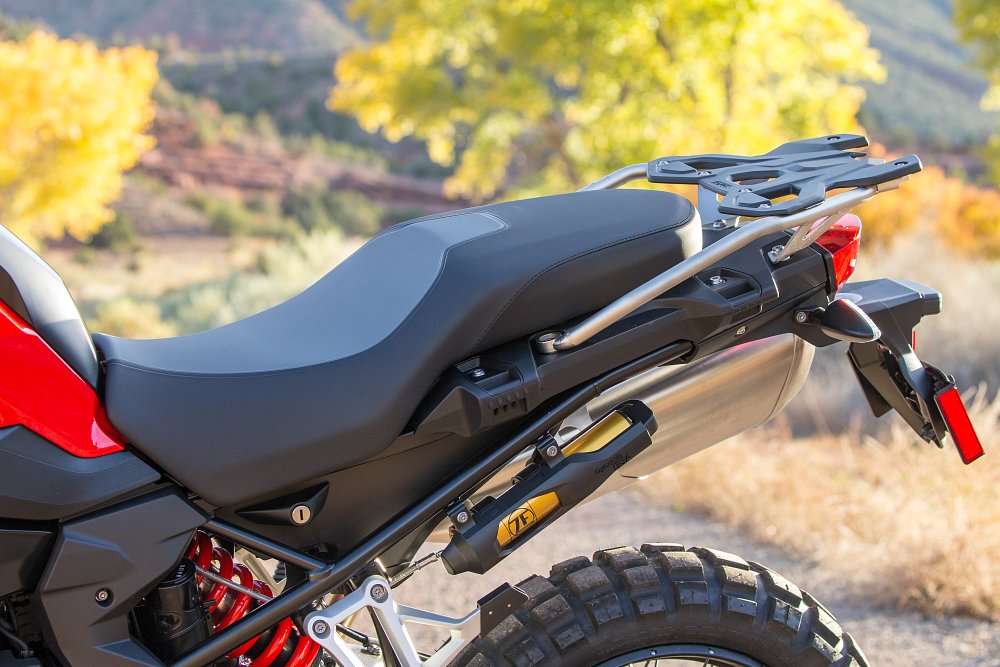
With the stock suspension, the standard seat height is 33.9 inches, which is 0.7 inches lower than the F 800 GS’s standard seat. If you’re a taller rider like myself (six feet, three inches), you can opt for the Rally seat, which increases legroom with a 35-inch reach to the ground. If you’re vertically challenged, there is a lowered suspension option that, when combined with the low seat, shortens the seat height to a more manageable 32.1 inches.
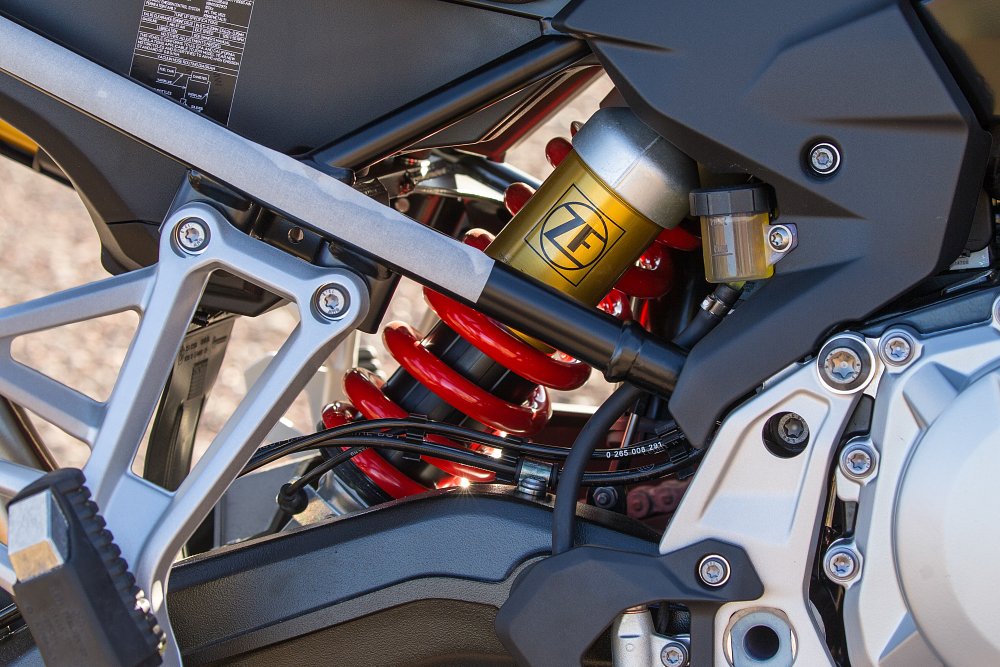
The lowered suspension option is only available when opting for the base rear shock. We didn’t get to test that option as our bikes were outfitted with the optional Dynamic ESA rear shock. If you don’t like messing around with suspension settings, this is the way to go. With the push of a button you can dial in preload and damping settings that are electronically monitored, calculated, and adjusted in milliseconds while on the fly.
On the F 850 GS, Dynamic ESA is only available via the Premium Package. It relies on all of the advanced electronics found in the Select Package to operate correctly. The main addition of the Select Package is the large 6.5-inch TFT Display, which controls all of the additional electronics and features connectivity to your smartphone. Base safety features are upgraded to ABS Pro and Dynamic Traction Control, which are lean-angle-sensitive. As I mentioned, this Select Package is needed in order to add the Dynamic ESA as suspension damping is lean-angle-sensitive, as well.
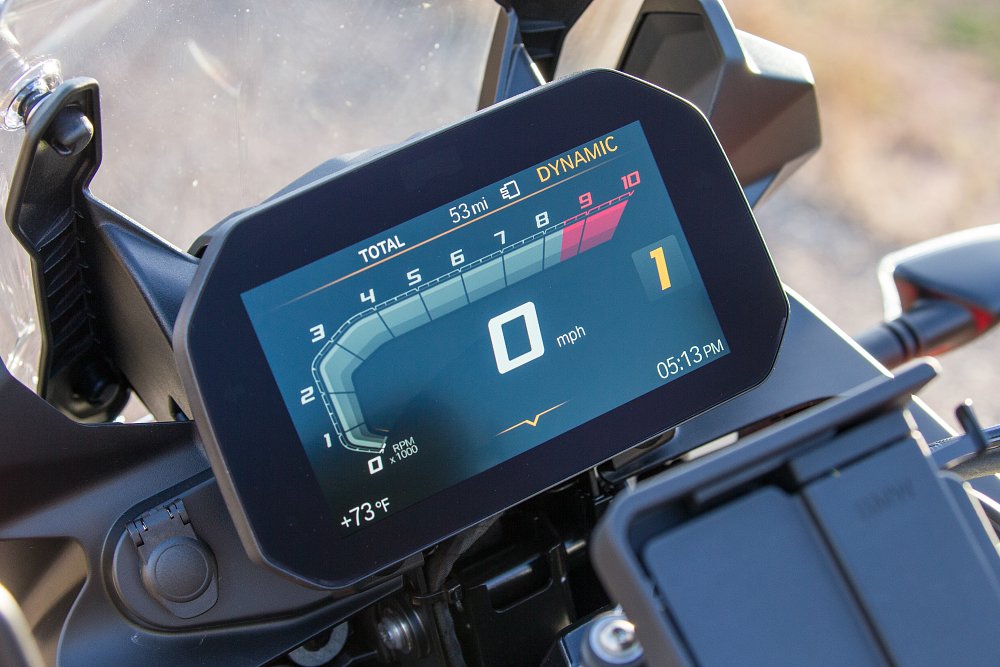
With the F 850 GS, the Select Package includes Ride Modes Pro, which expands your options from Rain and Road Modes to include Dynamic, Enduro, and Enduro Pro (which requires a separate coding plug-in). Each mode distinctly alters throttle response, ABS Pro and DTC engagement, Dynamic ESA damping, cruise control, and tire pressure monitoring.
To get a better understanding of how each setting affects the bike, take a look at the chart below (If you have any specific questions as to the bike’s electronics, I’ll try my best to answer them in the comments).
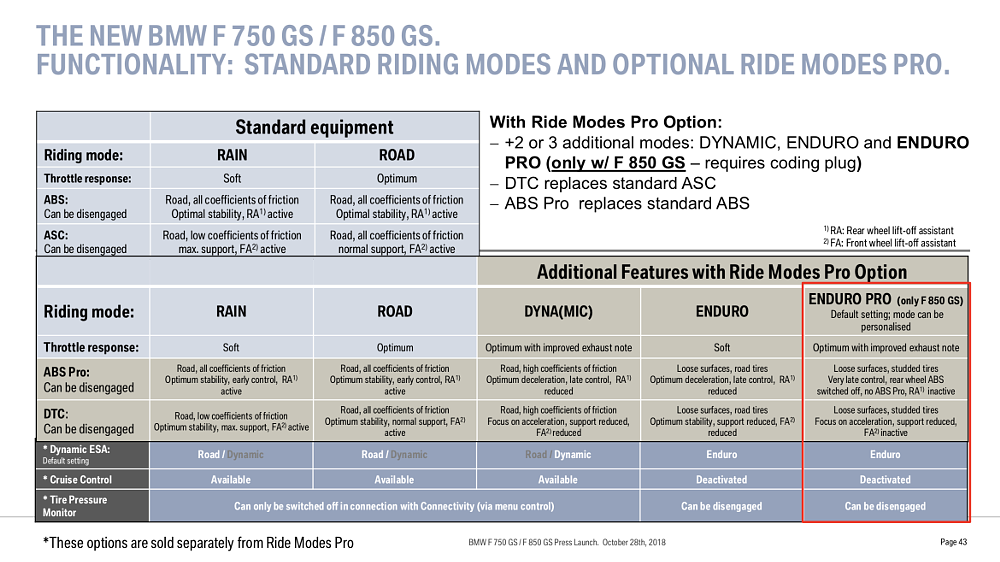
Riding the F 850 GS on the street
In order to give us a taste of what the new F 850 GS is capable of, BMW planned a 190-mile ride straddling the border of Colorado and Utah. The route utilized about 50 miles of beaten two-track jeep trails to start off the day followed by 140 scenic miles of high-speed, sweeping curves through the mountains.
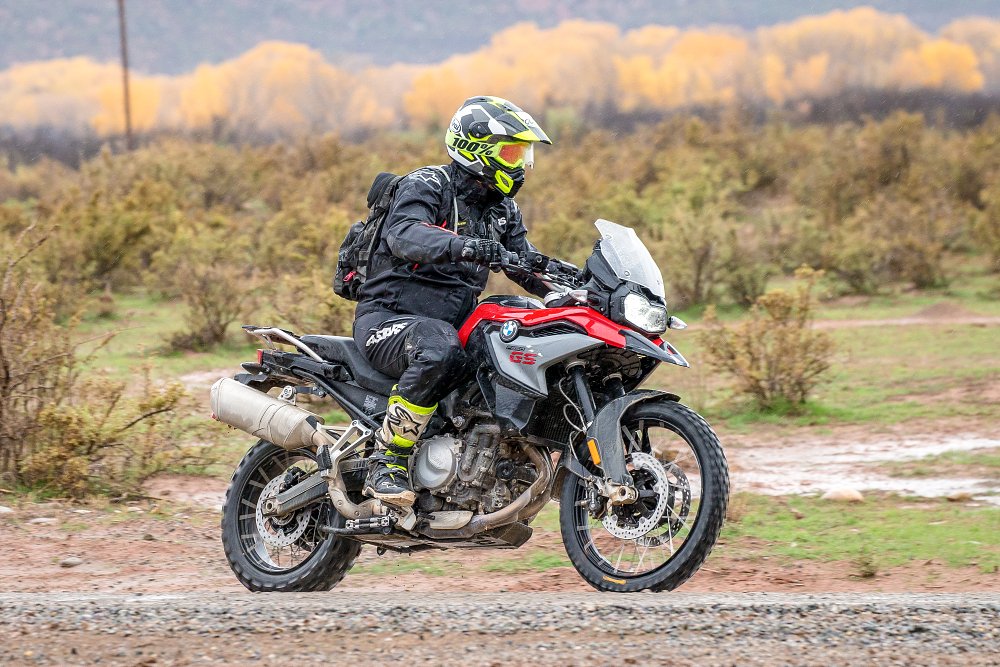
The F 850 GS, as a whole, feels more compact than the outgoing F 800 GS. While BMW couldn’t give me specifics on the suspension changes, there is definitely more damping in the fork and the spring has a very progressive feel. Overall, the new suspension is vastly improved for street use.
The placement of the gas tank moved from below the rider’s butt to the traditional location in between the rider and the handlebar. (You also may have noticed the exhaust is now located on the right side of the bike and the final chain drive is on the left.) When I first read this, I was afraid it would make the F 850 GS feel top-heavy, but it actually had the opposite effect.
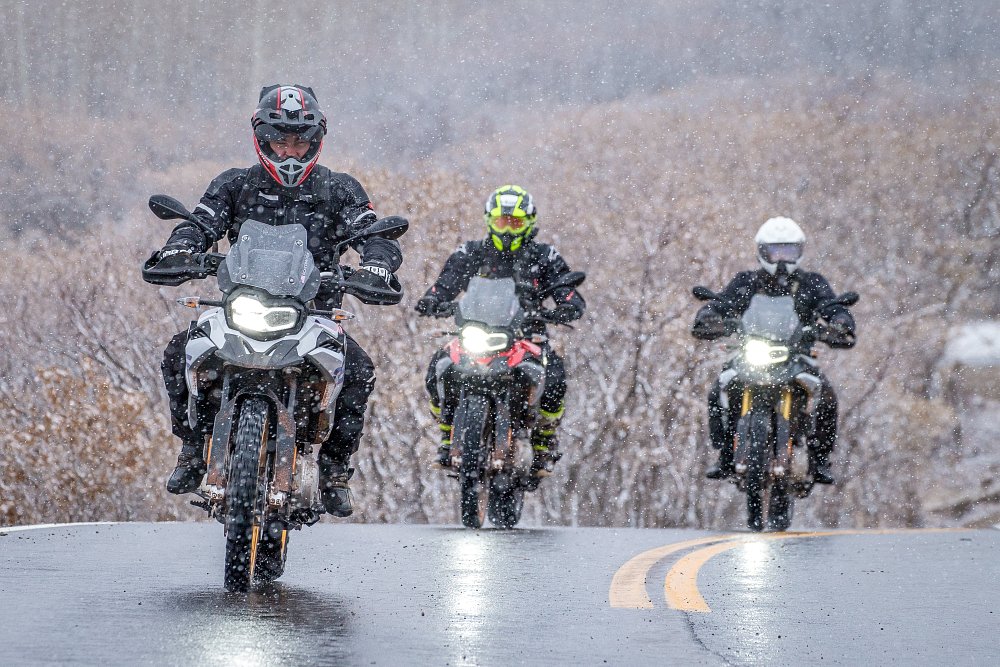
The longer wheelbase and revised steering geometry make the front end feel extremely stable and planted, even at high speeds. BMW claims a top speed of “125+ mph” out of the new F 850 GS, a claim our riding group, consisting of Rennie Scaysbrook, Steve Kamrad, Ryan Adams (not the alt-country musician), and Ron Lieback, made sure to test thoroughly.
More important than the bike’s top speed is how it feels comfortable cruising at a consistent speed. Whereas the F 800 GS felt a bit overwhelmed by long-distance touring at highway speeds, this new F 850 GS feels much more at home tackling long treks on the asphalt. Our average speed for the street ride was around 85 mph -- that is, once we made it through the snow storm.
Shortly after stopping at the Sorrel River Ranch for lunch, we rode south, skirting around Arches National Park and climbing into the hills toward Mt. Waas. As we climbed in elevation, the rain turned to snow as the temperature plummeted from around 55 degrees to around 30 degrees. This wouldn’t have been so bad if we hadn’t just ridden through about 30 water crossings through Onion Creek.
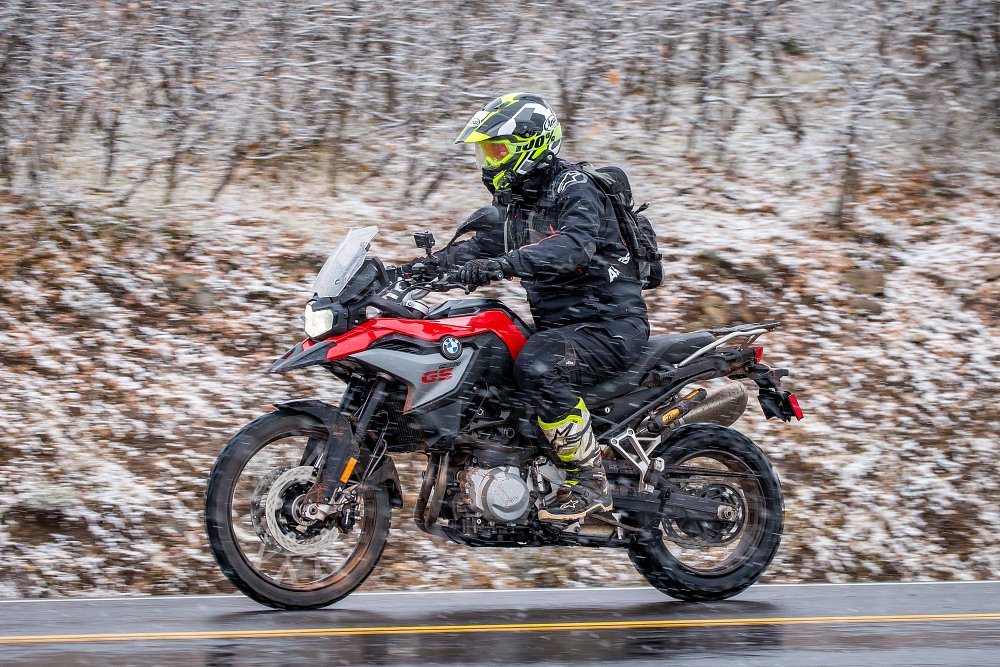
The snow and ice made for the perfect opportunity to try out the electronic safety controls. I had the F 850 in Dynamic mode which was the sportiest setting. Even with TKC 80s outfitted, the bike didn’t slip easily. Then again, we had slowed our pace way down.
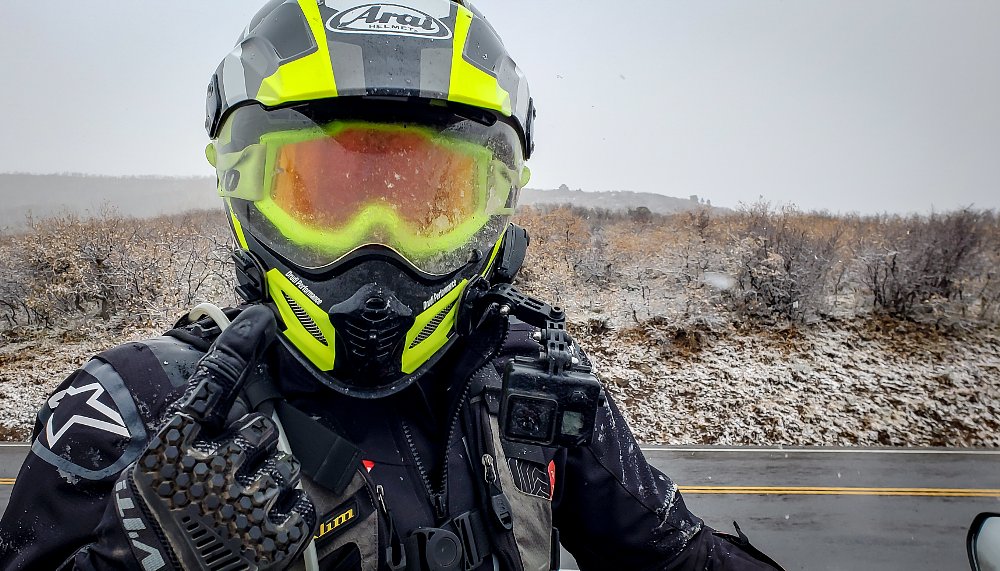
By the time the snow stopped, we were all significantly frozen. BMW’s ride leaders presented us with the option to abandon the planned route in favor of taking the highway home. Everyone in our little group opted to continue on, down a flooded stretch of road that the rain and snow had transformed into a slick river of mud.
The F 850 GS off-road
The dirt started less than half a mile outside of our hotel in Gateway, Colorado, with a relatively smooth mountain pass called John Brown Canyon Road.
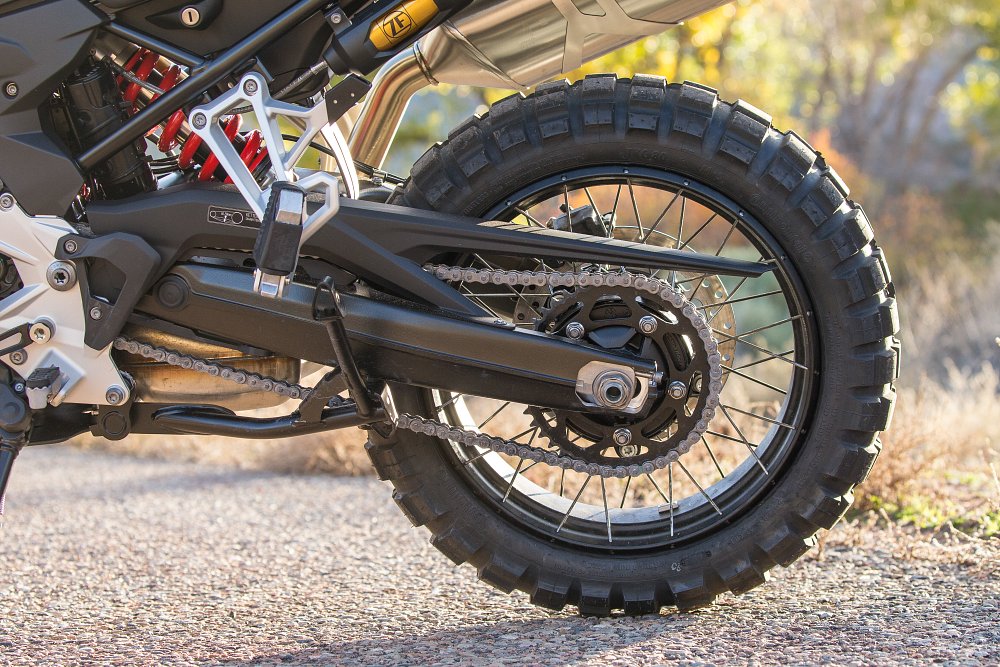
BMW’s tubeless, cross-spoked wheels are standard on the new F 850 GS. Our bikes were outfitted with either Continental TKC 80 or Metzeler Karoo 3 tires. I was happy to find that my bike was wearing TKC 80s, as I prefer them to the Metzelers.
Blazing hot into the first corner of the day, I realized that even with the brake pedal adjusted to its highest point, I couldn’t easily activate the rear brake. I would have loved to have had BMW’s little accessory flip down pedal installed for this ride.
I started out the day in Enduro Pro Mode, which limits traction control and disables ABS at the rear wheel. This mode is completely programmable, however, and I found that I preferred traction control to be completely turned off. Even with traction control completely off, it still felt as if it was intervening at times. I heard other riders comment on this as well. I’d be interested to see if perhaps I missed something in the advanced settings.
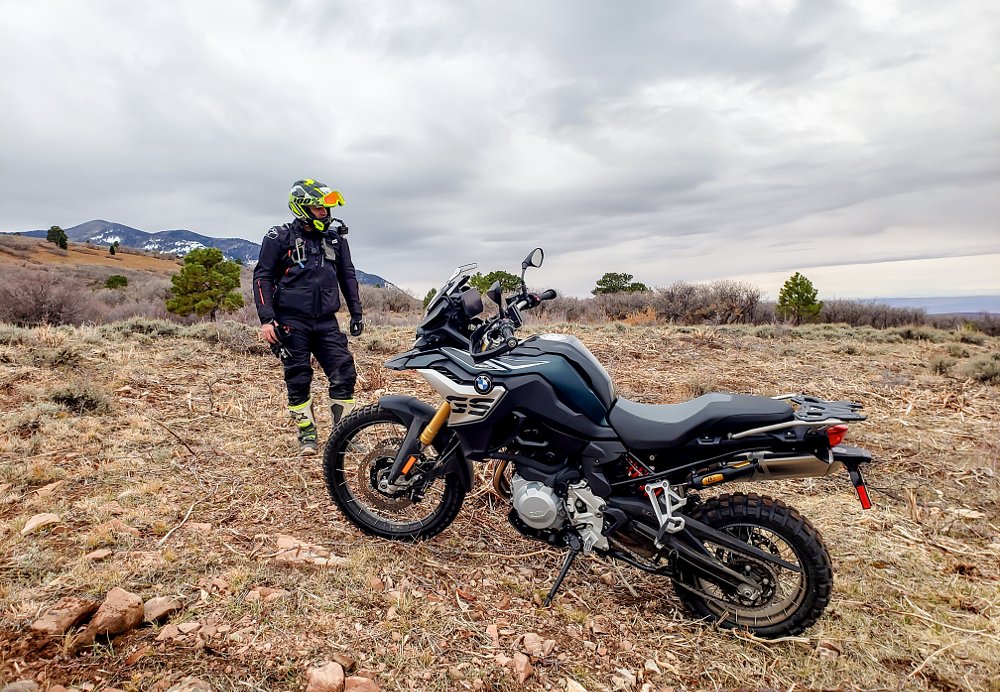
When the rest of the group took a coffee break to peek at some prehistoric dinosaur tracks, Steve Kamrad and I set off into the hills in search of some less than ideal conditions to test low-speed, off-road maneuverability. First gear feels shorter than on the F 800 GS, making it much easier to ride in low-speed technical situations. Steve commented that he felt it was the equivalent of going down one tooth at the front sprocket of the old bike.
The F 850 GS is much easier to ride off-road than the previous version. Even though the bike supposedly gained about 25 pounds, it doesn’t show it. The bike feels tighter and more compact than the F 800 GS. The front suspension works well until you really start to pick up speed off-road.
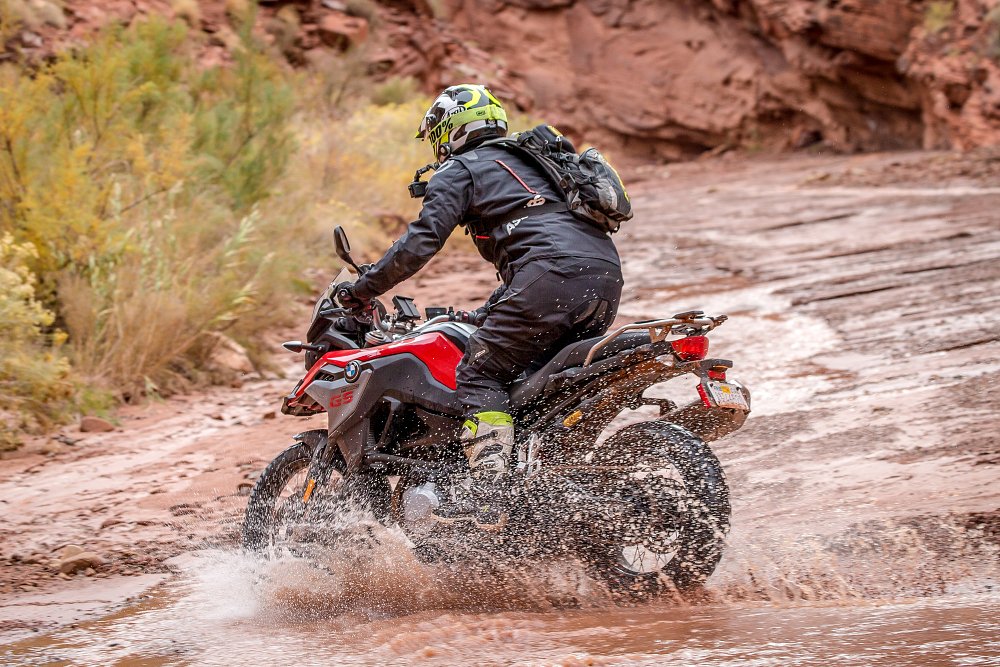
Riders not planning on racing enduros with their adventure bike will fare just fine. But if you’re like myself and prefer pushing the limits of your ADV bike off-road, adjustability at the front fork would have been a welcome addition.
As the two-track trail began to get more “fun,” our small group of riders began to pick up speed. We sought out rocks and berms to use as kickers to loft the GS into the air. I found the limits of the bike’s ground clearance when I crossed over an empty streambed too fast and bottomed the F 850 GS out against its stock skid plate.
As I mentioned earlier, I was having a hard time reaching my rear brake. I found myself banging aggressive downshifts to help control my corner entry speed. As our bikes were outfitted with quickshifters and an anti-hop clutch (BMW speak for slipper clutch), this process was extremely simple. What wasn’t simple was upshifting once I was accelerating out of a corner. I found it nearly impossible to get my Alpinestars Tech 7 boot under the shift lever while standing (in spite of the shifter being extended to the top of its adjustment range).
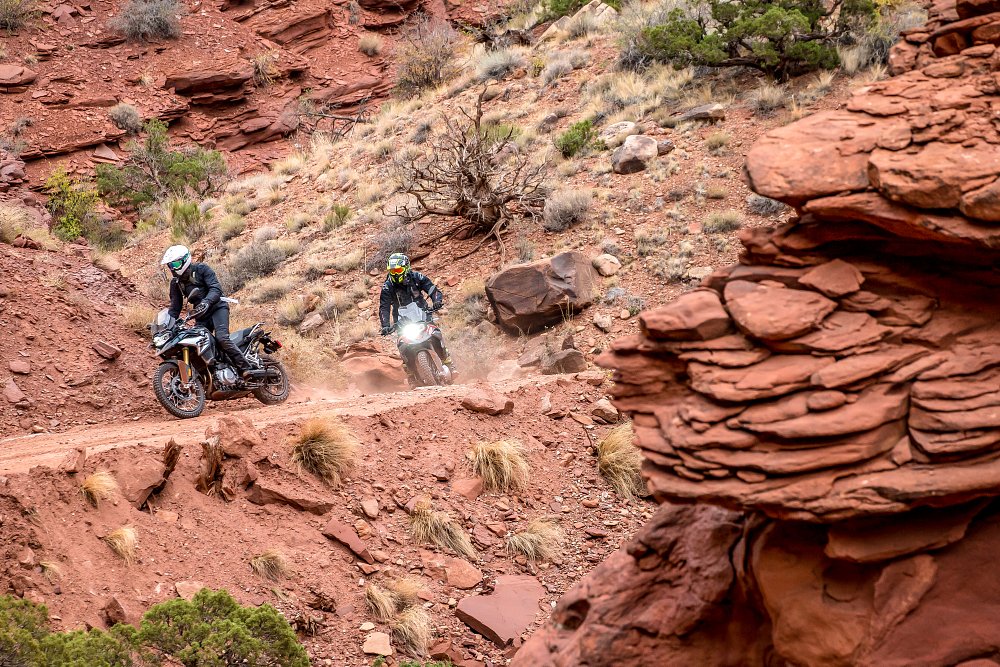
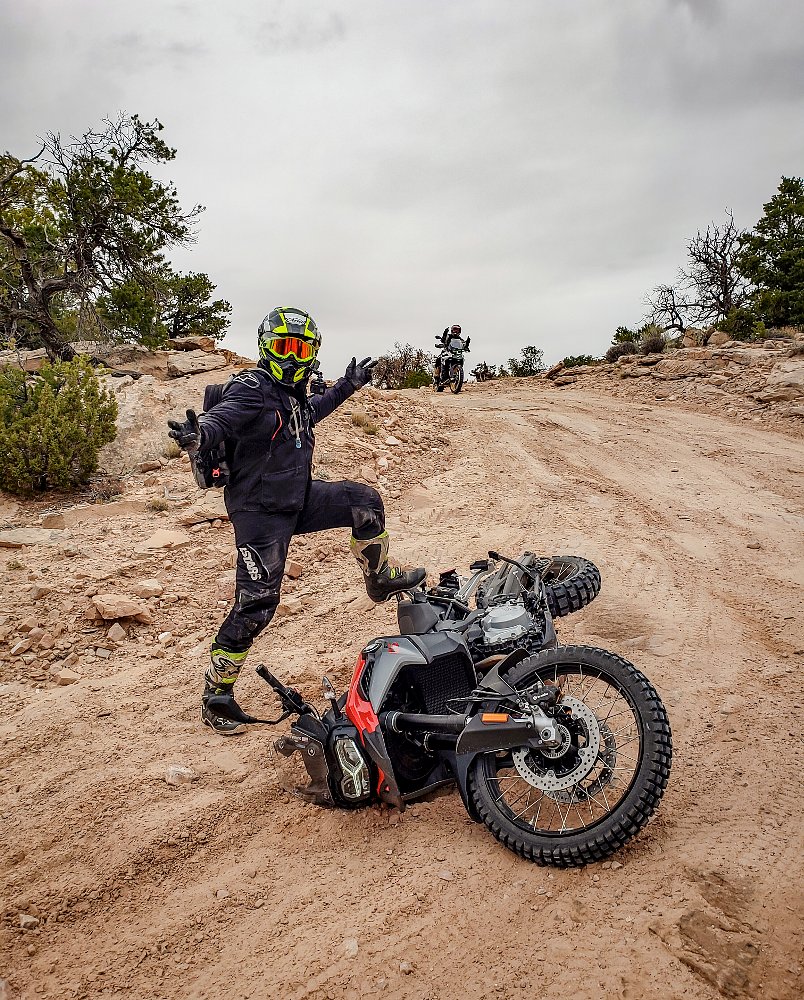
BMW was wrong to trust me with minimal crash protection and the tip of my brake lever paid the price along with a few scratches to the fairing. A good set of handguards and crash bars would have prevented this. I would recommend the investment if you’re going to take your F 850 GS off-road. Crash protection is cheap insurance compared to the cost of the bike.
Cost and competition
Our F 850 GSes, as tested with the Premium Package and center stands, ranged from an MSRP of $16,820 to $17,095 depending on color. That makes the F 850 GS the most expensive middleweight adventure bike available. But keep in mind that price includes both the Select and the Premium Package.
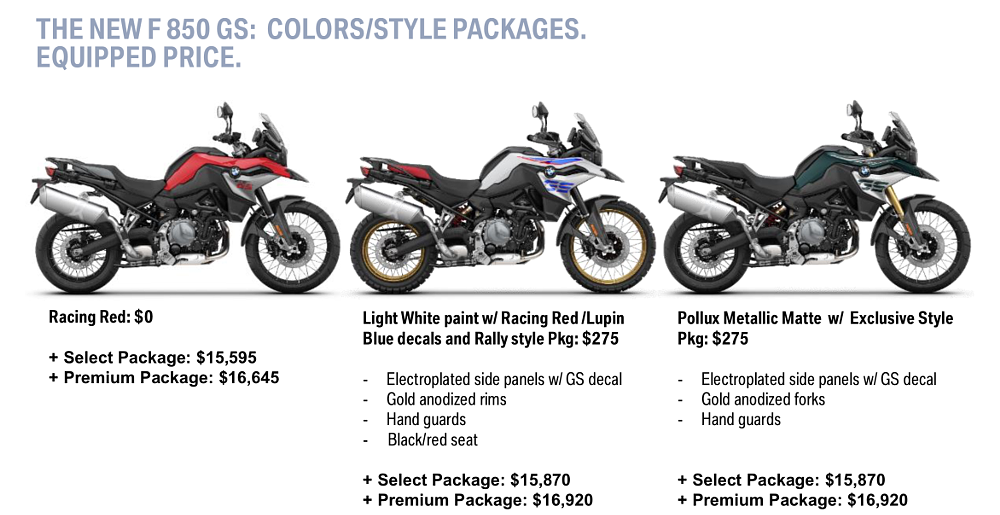
If you were to opt for just the Select Package with no center stand, you’d be looking at an MSRP of $15,595 to $15,870, depending on color. You’d also be giving up the keyless ride system, tire pressure monitoring, the styled LED headlight, and your choice of either Dynamic ESA or a lowered suspension.
Perhaps you’ve seen the F 850’s MSRP listed at $13,195. That would be for the base version. You would lose the heated grips, cruise control, luggage rack, saddlebag mounts, cell phone connectivity via the TFT dash, the TFT dash itself, Dynamic Traction Control, Gear Shift Assist Pro, Rider Modes Pro (with Dynamic, Enduro, and Enduro Pro modes), ABS Pro, and the GPS Preparation mount.
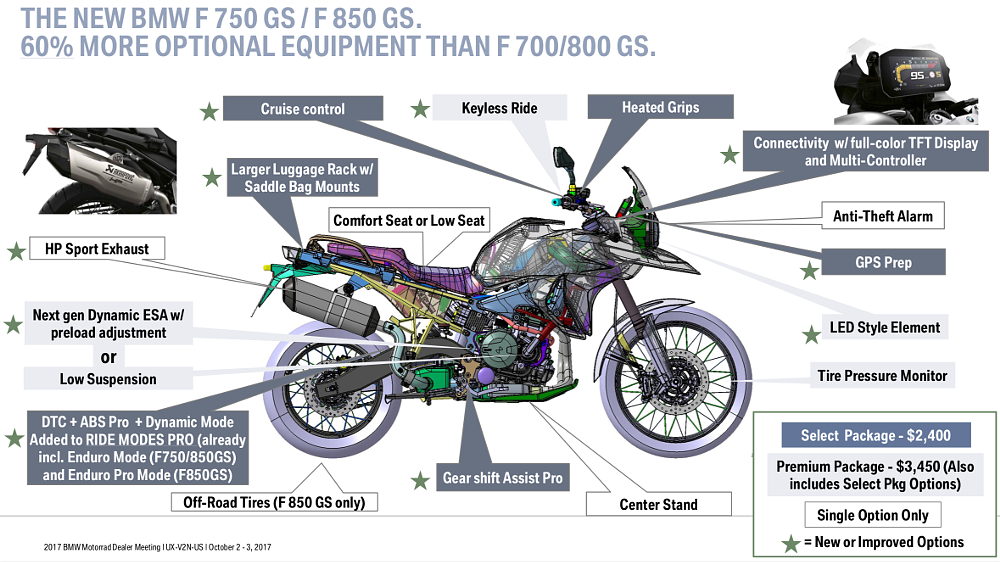
And if you are willing to give up all of those goodies, you’d also have to be willing to wait. As BMW isn’t importing any base models to the United States, you’d have to special order a stripped-down version and wait for it to be delivered. The reason for this is that BMW has found that about 98 percent of their customers) want the additional add-ons found in the Select Package.
So how does the BMW compete against the current crop of middleweights? It is now more technologically advanced than the Honda Africa Twin and the KTM 1090 Adventure R. It closes the gap against the Triumph Tiger XCa as being the most comfortable to ride on the street. And with its low seat height and compact feel, it’s probably close to being the most approachable of the bunch for riders looking to take their adventure bike off-road for the first time.
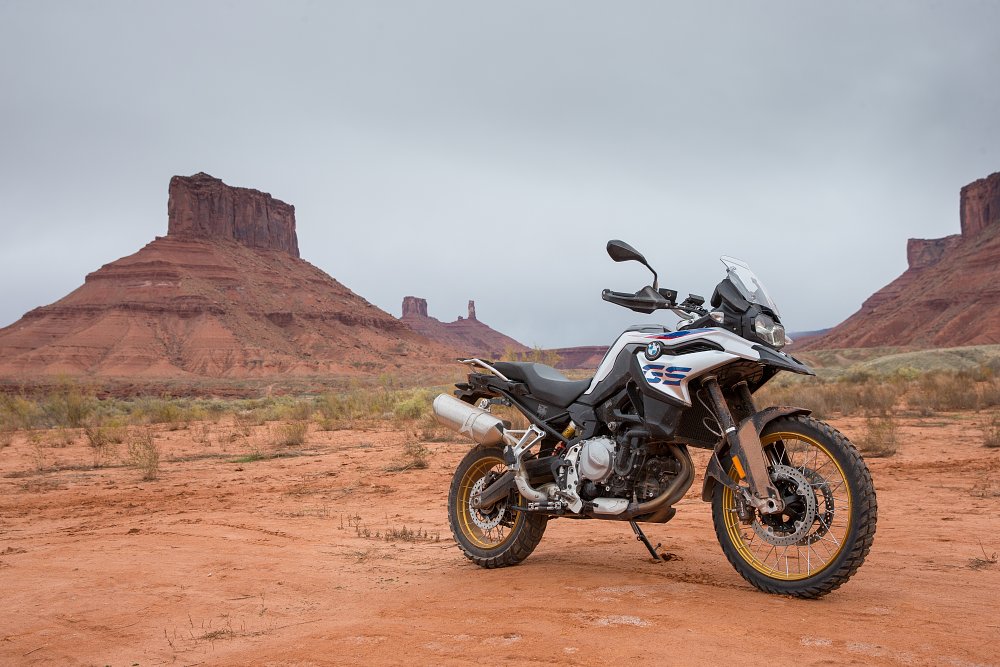
However, it doesn’t have an adjustable front fork, there is no crash protection (aside from a small skid plate) included in the price, and for an additional $904 you’d be able to add a KTM 1290 Super Adventure R to your garage, which is a lot of motorcycle. But keep in mind, the 1090 and 1290 are big bikes that have a steep learning curve for novice riders. While they are a great option for aggressive, off-road riding, I wouldn’t recommend them for riders just getting started in off-road ADV riding, as they can bite you pretty hard.
Based on information they provided, it seems that BMW considers KTM their biggest competitor at the moment, and rightfully so. From September 2017 to September 2018. KTM has increased the market share of their plated, street-legal bikes 73.2 percent, from 5,255 units sold in 2017 to 9,102 units sold in 2018. By comparison BMW has only grown 4.6 percent, from 10,189 units sold in 2017 to 10,661 sold in 2018.
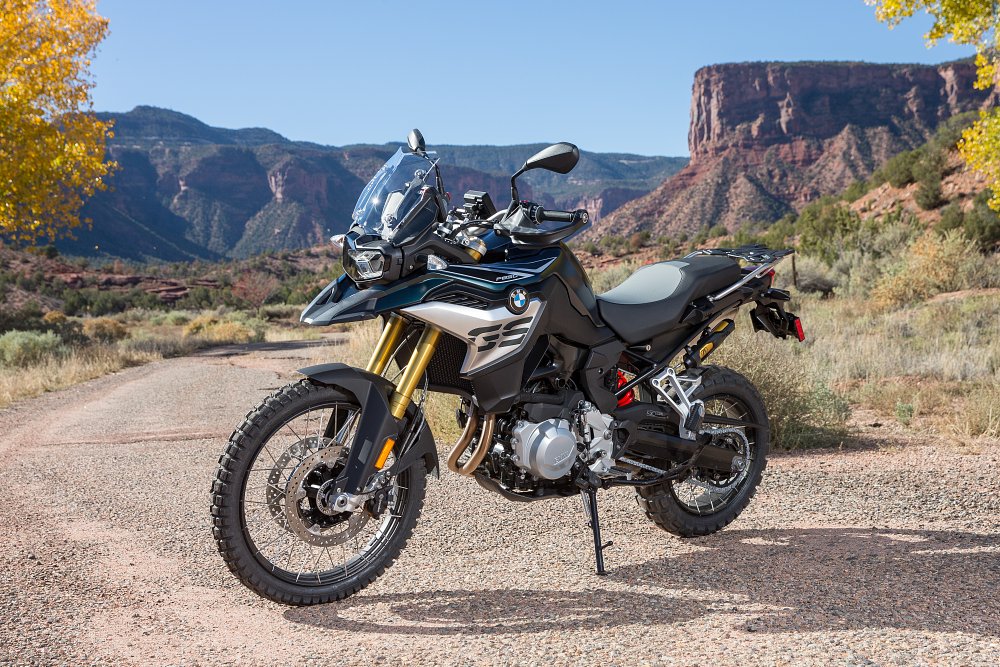
The F 800 GS had become outdated when compared to the competition. BMW is hoping that the improvements made to the F 850 GS should help to attract new buyers in the growing ADV segment back to the Bavarian manufacturer.
Conclusion
The F 850 GS is better in every way over its predecessor. It’s faster and better handling on the street, while simultaneously improving its off-road pedigree. It’s the only bike in its class to offer an electronically adjustable rear shock, and the available electronics package is second to none.
I think there are a slew of riders out there who previously shied away from the F 800 GS because it didn’t have the manners and sophistication of the R 1200 GS. This new F 850 GS closes the gap between the two models. I think the increased level of refinement is going to make it all the more attractive to potential customers looking for a premium, adventure-touring, motorcycle.
| 2019 BMW F 850 GS | |
|---|---|
| Price (MSRP) | $16,820 (as tested) |
| Engine type | Liquid-cooled, two-cylinder, DOHC, four valves per cylinder, and dry sump lubrication |
| Displacement | 853 cc |
| Bore x stroke | 84 mm x 77 mm |
| Compression | 12.7/1 |
| Power (claimed) | 90 horsepower @ 8,000 rpm |
| Torque (claimed) | 63 foot-pounds @ 6,250 rpm |
| Transmission | Six-speed |
| Front suspension | 43 mm inverted fork |
| Rear suspension | Directly mounted WAD shock with hydraulic preload and rebound, optional Dynamic ESA shock |
| Suspension travel front/rear | 8 inches / 8.6 inches |
| Front brake | Two-piston, Brembo calipers |
| Rear brake | One-piston caliper |
| Tires front/rear | 90/90-21 Continental TKC 80; 150/70-17 Continental TKC 80 (as tested) |
| Rake | 28 degrees |
| Trail | 4.9 inches |
| Wheelbase | 62.7 inches |
| Seat height | 32.1 - 35 inches (depending on seat and suspension configuration) |
| Tank capacity | 4 gallons |
| Wet weight (claimed) | 504 pounds |

 Membership
Membership

